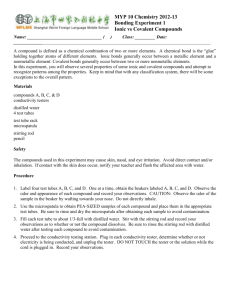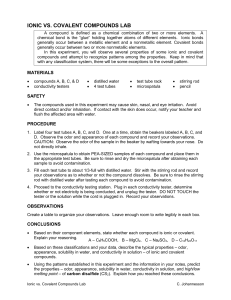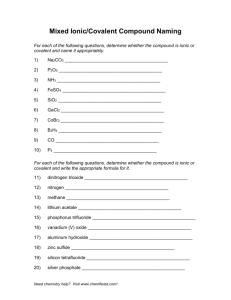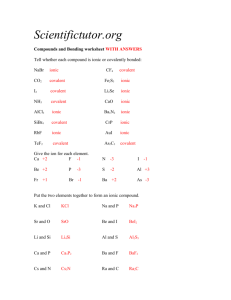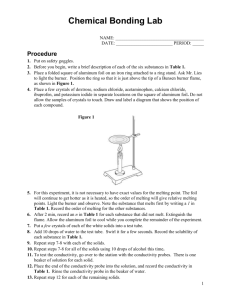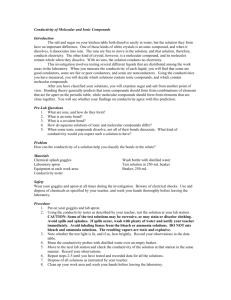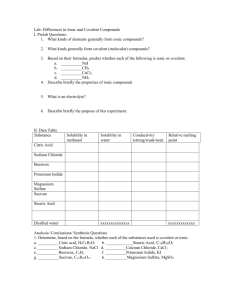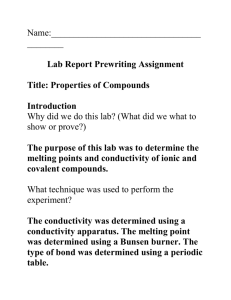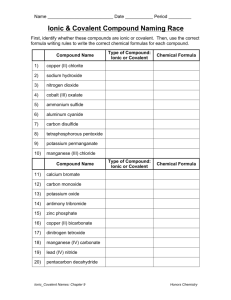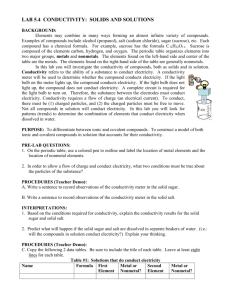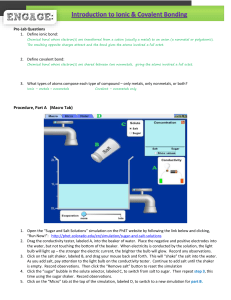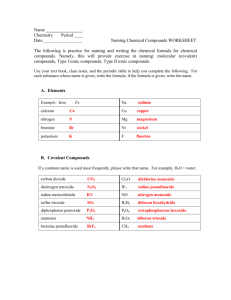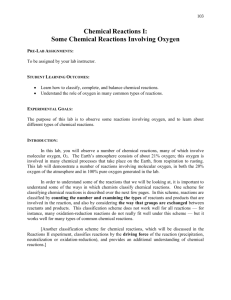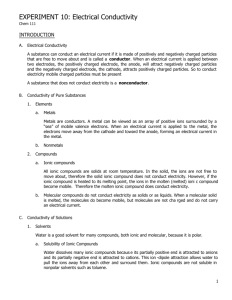Comparing the Properties of Ionic and Covalent Compounds
advertisement
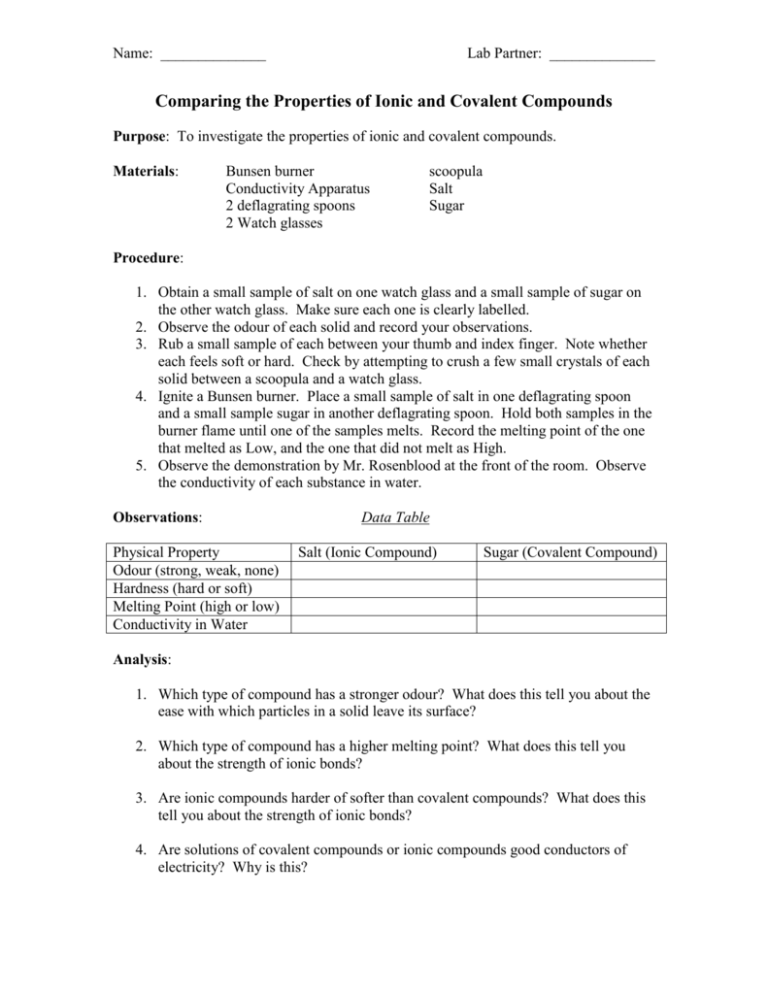
Name: ______________ Lab Partner: ______________ Comparing the Properties of Ionic and Covalent Compounds Purpose: To investigate the properties of ionic and covalent compounds. Materials: Bunsen burner Conductivity Apparatus 2 deflagrating spoons 2 Watch glasses scoopula Salt Sugar Procedure: 1. Obtain a small sample of salt on one watch glass and a small sample of sugar on the other watch glass. Make sure each one is clearly labelled. 2. Observe the odour of each solid and record your observations. 3. Rub a small sample of each between your thumb and index finger. Note whether each feels soft or hard. Check by attempting to crush a few small crystals of each solid between a scoopula and a watch glass. 4. Ignite a Bunsen burner. Place a small sample of salt in one deflagrating spoon and a small sample sugar in another deflagrating spoon. Hold both samples in the burner flame until one of the samples melts. Record the melting point of the one that melted as Low, and the one that did not melt as High. 5. Observe the demonstration by Mr. Rosenblood at the front of the room. Observe the conductivity of each substance in water. Observations: Physical Property Odour (strong, weak, none) Hardness (hard or soft) Melting Point (high or low) Conductivity in Water Data Table Salt (Ionic Compound) Sugar (Covalent Compound) Analysis: 1. Which type of compound has a stronger odour? What does this tell you about the ease with which particles in a solid leave its surface? 2. Which type of compound has a higher melting point? What does this tell you about the strength of ionic bonds? 3. Are ionic compounds harder of softer than covalent compounds? What does this tell you about the strength of ionic bonds? 4. Are solutions of covalent compounds or ionic compounds good conductors of electricity? Why is this?




